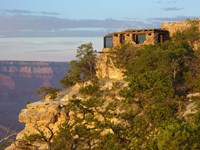- Fort Vancouver National Historic Site (6)
- Sleeping Bear Dunes National Lakeshore (5)
- Indiana Dunes National Park (4)
- Lewis & Clark National Historic Trail (4)
- Cabrillo National Monument (3)
- Channel Islands National Park (3)
- Golden Gate National Recreation Area (3)
- San Antonio Missions National Historical Park (3)
- White Sands National Park (3)
- Show More ...
- Geologic Resources Division (3)
- National Historic Landmarks Program (3)
- Inventory and Monitoring Division (2)
- Mediterranean Coast Inventory & Monitoring Network (1)
- National Center for Preservation Technology and Training (1)
- National Natural Landmarks Program (1)
- National Register of Historic Places Program (1)
- Natural Resource Condition Assessment Program (1)
- Natural Resource Stewardship and Science Directorate (1)
- Show More ...
Showing 92 results for fauna ...
Philip A. Hart Visitor Center
Woodend Nature Sanctuary
- Type: Place
Woodend Nature Sanctuary offers 40 acres of restored forests, meadows, and streams in the Chesapeake Bay watershed. Listed on the National Register of Historic Places, it features nature trails, interactive exhibits, a nature playground and an historic mansion. Visitors can explore diverse habitats, learn about conservation efforts, and experience the connections between people and nature. Engaging signage and hands-on programs make it a welcoming destination for all ages.
Yavapai Geology Museum
- Type: Place
Open daily: 8 am - 7 pm. Yavapai Geology Museum offers one of the best vantage points for an overview of Grand Canyon geology. The building is right on the very edge of the canyon rim at Yavapai Point, The Museum Features: a bookstore and museum shop, large picture windows for viewing the canyon, and a variety of exhibits about the geology of Grand Canyon. Restrooms are in a separate building adjacent to the parking lot. The shuttle bus stop is also on the parking lot.
Wayside: What Does Sleeping Bear Dunes Mean to You?
- Type: Article
Rivers, such as the Colorado and Green River, are vital, but limited, resources in the semiarid and arid intermountain west. The Upper Colorado River Basin is the principal water supply of the western United States and supports habitat for a variety of flora and fauna. For nearly a century, managers have been striving to balance water use needs and ecosystem health. Learn how dams and managed flow variability have affected riparian corridors in Canyonlands National Park.
Henry Blake Fuller
- Type: Person
Henry Blake Fuller was a key figure in the Chicago Literary Renaissance, renowned for pioneering social realism in American literature. He is noted for being one of the first American novelists to explore homosexual themes. Fuller had a complicated love-hate relationship with Chicago. He frequently found solace at Indiana Dunes, which served as a retreat from urban life and a source for inspiration.
The Dune-Faun
Bear Creek Picnic Area, Milepost 313
Climate and Groundwater Monitoring at Casa Grande Ruins National Monument
- Type: Article
At Casa Grande Ruins National Monument, the Sonoran Desert Network monitors climate and groundwater. Understanding changes in these closely linked factors helps managers to make informed decisions affecting park flora and fauna, as well as key cultural resources. Learn about our findings for 2018 in this desert park.
Permanent Residents, Temporary Visitors
Gambrill Mill Picnic Area
Esch Beach
- Type: Place
This dazzling beach, located at the mouth of Otter Creek, is an ideal place for the whole family. The creek gently empties into Lake Michigan. Kids enjoy wading upriver into the belly of the forest and letting the current drift them toward the lake. **Leashed pets are allowed to the right of Esch Road when facing the water. NO Pets are allowed to the left of Esch Road.**
- Type: Place
The Elliott Coues House was the Washington D.C. residence of the prominent American ornithologist Elliott C. Coues from 1887 to his death in 1899. While residing at the home, Elliott Coues studied bird species from across the nation and wrote some of the most important texts in North American ornithology.
Pine Plantation - Stop #12
- Type: Place
To survive in the dunes is no easy task. Flora and fauna deal with strong sunlight, poor soils, and constant winds. The wind action alone can dry out plants, expose root systems, or even completely bury vegetation, including trees.The cottonwood is the only common tree of the dunes and is well adapted to the dune environment.
Dune Ecology Basswood Tree - Stop #6
- Type: Place
To survive in the dunes is no easy task. Flora and fauna deal with strong sunlight, poor soils, and constant winds. The wind action alone can dry out plants, expose root systems, or even completely bury vegetation, including trees.The cottonwood is the only common tree of the dunes and is well adapted to the dune environment.




















